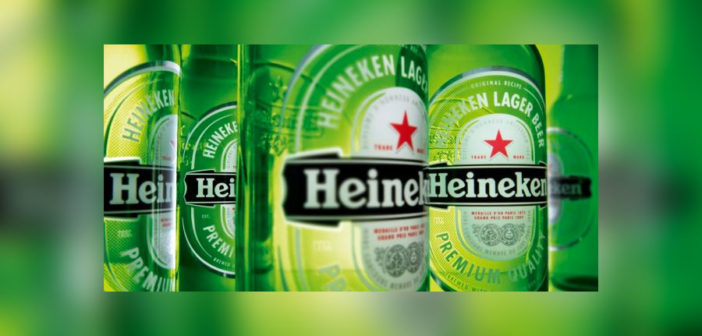As Snapchat’s age demographic matures, alcohol brands are beginning to take notice of its advertising potential, however Heineken insists that the platform’s audience is “too young for us” and will instead focus on Instagram as it makes mobile a bigger part of its sports marketing efforts.
The beer brand is planning to double its digital marketing spend by 2020 and has set itself the lofty ambition of becoming the benchmark of creativity in the mobile world. Yet it will pursue this goal without the use of one of the biggest social media platforms.
“Snapchat’s audience is still too young because as a responsible alcohol producer we want to make sure we market at least 75% above legal drinking,” said the brand’s director of global sponsorships, Hans Erik Tuijt.
This cautious approach is a common one among alcohol brands, which have viewed Snapchat as a social media platform comprised of a young demographic not old enough to buy alcohol. Just 6.4% of Snapchat’s users in the US – its biggest market – will be between the ages of 45 and 54 by the end of the year, according to eMarketer.
However, the platform has shown signs of maturity. Speaking at IAB Engage last year, Snapchat’s general manager for the UK, Claire Valoti, revealed that 77% of its UK audience are over 18 years-old and 43 per cent of adult users are parents.
Higher age restrictions around alcohol in the US present a different picture though, in May last year AdWeek reported that only 40% of its US user base were over the legal drinking age of 21. Snapchat itself has not publicly disclosed the percentage of users under 21.
Still, with over 150 million daily active users, the appeal of capturing millennials of legal-drinking age has enticed some alcohol brands, particularly given the platform’s age-gated capabilities which require users to input their birth date when they download the app and help alcohol brands comply with trade regulations.
Jim Beam, AB InBev, MillerCoors, Diageo, Pernod Ricard and Bacardi are among the alcohol companies marketing on the platform now.
The age-restriction measures are not full-proof though; some alcohol-branded user-generated content such as sponsored lenses and geofilters can be shared with users who have not been age-gated.
Tuijt points out that Heineken’s reluctance to dive into Snapchat should not be interpreted as a sign of an under planned mobile strategy.
“You cannot activate sports sponsorships anymore unless you have a mobile strategy,” said Tuijt.
He maintains that the brand’s sponsorship of global properties such as the Uefa Champions League, Formula One, Rugby World Cup and James Bond have yielded a wealth of data which it uses to shape its mobile activation strategies.
“Through these partnerships, we have learned more and more that we need to engage with people on their mobile and we’ll use that knowledge to come up with a social strategy that works around the world.
“During the 2015 Rugby World Cup, 81% of the buzz came from Twitter, so if you’re not there you’re not part of the conversation.
In addition to Twitter Tuijit adds that “Instagram is definitely part of our plans” and sees it as a more suitable alternative to Snapchat.
The introduction of Instagram Stories has been ripped from Snapchat and has proven popular for brands since its introduction last year.
Nike for example generated 800,000 views in 24 hours for an Instagram Story it posted in August 2016. On Snapchat Nike’s most watched video racked up just 66,000 views, according to Nike and its social media agency Laundry Service.
Alcohol brands such as Ketel One and Buchanan’s whisky have also started using Instagram Stories. Instagram allows them to restrict viewing to people older than 21, something which Snapchat only allows if the brand pays for an ad targeted to people 21 and older.
Similarly, Bud Light has also taken advantage of the tool with a 15-second ad within Stories that follows a group of friends during their night out.
Heineken’s trepidation of Snapchat will be alleviated by Instagram’s larger audience and adeptness at catering to brands, meaning the brewer will gain more knowledge and data through its mobile activations on Instagram, while it waits for Snapchat’s audience to mature.
–
This article first appeared in www.thedrum.com
Seeking to build and grow your brand using the force of consumer insight, strategic foresight, creative disruption and technology prowess? Talk to us at +9714 3867728 or mail: info@groupisd.com or visit www.groupisd.com




